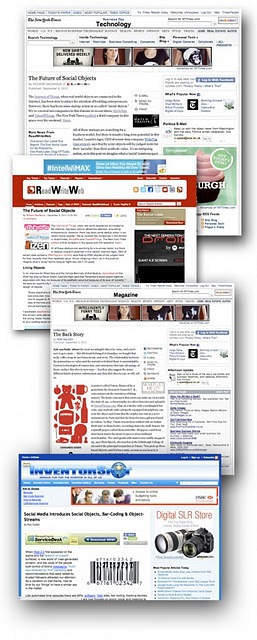Its been a busy time, thus the slight reduction in posts – its all good though, we are launching a new survey system with the Mayor of London next week, a tweet-o-meter exhibit in the British Library and our other current project Tales of Things has reached the New York Times, twice…
Rob Walkers article is a good introduction to the potential of tagging and in particular memory. This article has launched many other blogs and tweets that tell our story along with Itizen and Stickbits. Try this: http://twitter.com/#search?q=social%20objects
and these links…
NYTimes1 , NYTimes2 , Read/Write/Web , Inventorspot
The Back Story
By Rob Walker
Ask anybody about the most meaningful object he owns, and you’re sure to get a story — this old trunk belonged to Grandpa, we bought that tacky coffee mug on our honeymoon, and so on. The relationship between the possessions we value and the narratives behind them is unmistakable. Current technologies of connection, and enterprises that take advantage of them, surface this idea in new ways — but they also suggest the many different kinds of stories, information and data that objects can, or will, tell us.
A project called Totem, financed by a grant from the Research Councils U.K., concentrates on the narratives of thing-owners. The basic concept is that users can write up (or record) the story of, say, a chess trophy or a silver bracelet and upload it to TalesofThings.com. Slap on a sticker with a newfangled bar code, and anybody with a properly equipped smartphone can scan the object and learn that the trophy was won in a 2007 tournament in Paris and that the bracelet was a gift purchased in Lisbon.
In May, Totem researchers worked with an Oxfam thrift store in Manchester, recording stories by stuff-donors, for a spinoff project called RememberMe. Shoppers could hear short back stories for about 60 pieces of secondhand merchandise. The used goods with stories were swiftly snapped up, says Chris Speed, who teaches at the Edinburgh College of Art and is the principal researcher at Totem: “You pick up these banal objects, and if it has a story, as soon as you hear it, it becomes something far richer.”
You can follow all updates via the TOTeM Blog
